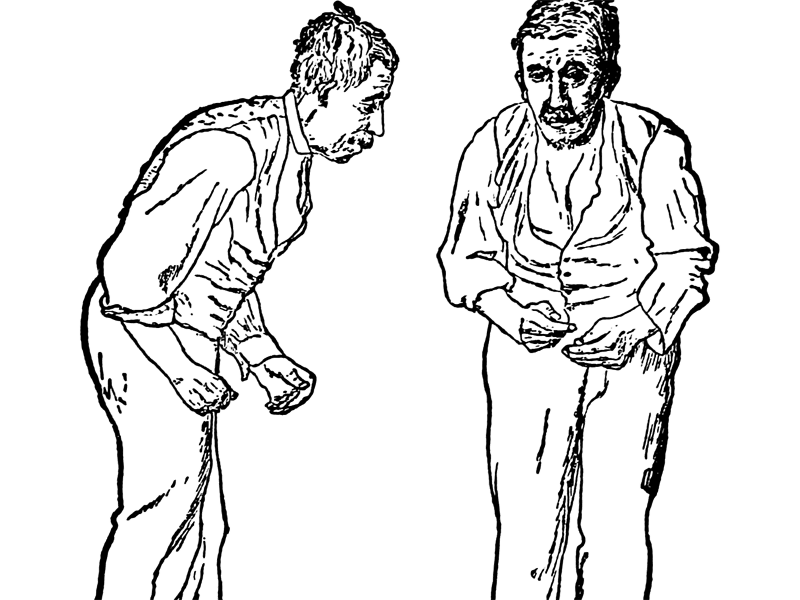Research discovers link between industrial cleaning chemicals, Parkinson’s
Front and side views of a man portrayed to be suffering from Parkinson’s disease: Gower’s rendition was first published in A Manual of Diseases of the Nervous System. (Drawing by William Richard Gowers, via Wikimedia Commons.)
Parkinson’s disease afflicts some 700,000 Americans.
The disorder, which often causes tremors and an unsteady gait, more than many other diseases, is linked to environmental exposures. Recently, researchers revealed they thought a common workplace chemical may be a possible cause.
Dr. Samuel Goldman, of The Parkinson’s Institute in Sunnyvale, Calif., co-led the study which was published in Annals of Neurology in November. In the study, Goldman and his fellow researchers looked at 99 pairs of twins where one brother has Parkinson’s and one did not. The researchers conducted a detailed history of every place they’d worked for more than six months dating back to age 10.
“We found that the twin who was exposed to a compound called trichloroethylene, or TCE, had a more than six-fold increased risk of having Parkinson’s disease than their unexposed co-twin,” he said. “And there were also some other solvents that we looked at as well, including one called PERC, or perchloroethylene, which is the most common dry cleaning solvent, and that was also associated with a markedly increased risk of Parkinsons.”
TCE was widely used 30 years ago, but has become less popular recently. It was used primarily to degrease metal products, though it’s also used in consumer products, including to de-caffeinate coffee and was a general anesthetic.
Those who had been exposed had a nearly nine-fold increase in risk, Goldman said. The most common occupational exposure settings for TCE and PERC were among electricians and dry cleaners as well as people who repaired industrial machinery and artists.
“We’ve always believed that the vast majority of Parkinson’s disease is a consequence of environmental risk factors, but it’s important to recognize that this is a single study, so replication of our results is really important at this point,” Goldman said.
There’s believed to be genetic influence on Parkinson’s as well, though, as Goldman said, it’s long been believed that chemicals, like pesticides, play a role as well.
This particular study has been looking at twins since the early 90s, which gave researchers a lot of data to use in their study.
Unfortunately, the downside to this study is there’s really nothing to be done for those who’ve already been exposed to TCE, other than hope.
“Currently there really is no way that we’re aware of, to delay or prevent Parkinson’s disease,” he said. I think the most important thing we can do right now is to replicate this observation and if it’s found to be a consistently observed link between exposure to these compounds and Parkinson’s, I would hope that the funding agencies would really get behind this work and help us move it forward.”
Goldman said we’ve only begun to scratch the surface of what environmental factos may cause Parkinson’s.
“What’s really interesting about Parkinson’s is that there are very few naturally occurring disease clusters. When you find a cluster, it’s a good sign that there’s likely to be a shared environmental determinant in those people,” he said. “That implies that the environmental factors that go into causing Parkinson’s disease are likely spread out over a very long period of time and maybe different in everyone.”
Our coverage reaches millions each week, but only a small fraction of listeners contribute to sustain our program. We still need 224 more people to donate $100 or $10/monthly to unlock our $67,000 match. Will you help us get there today?
